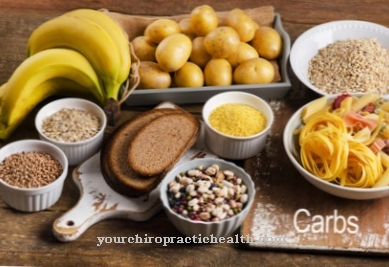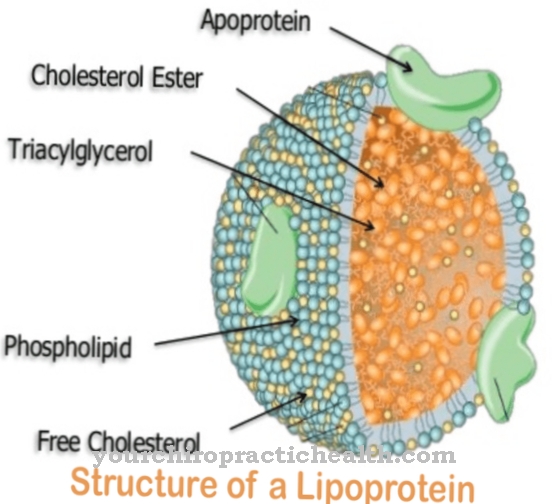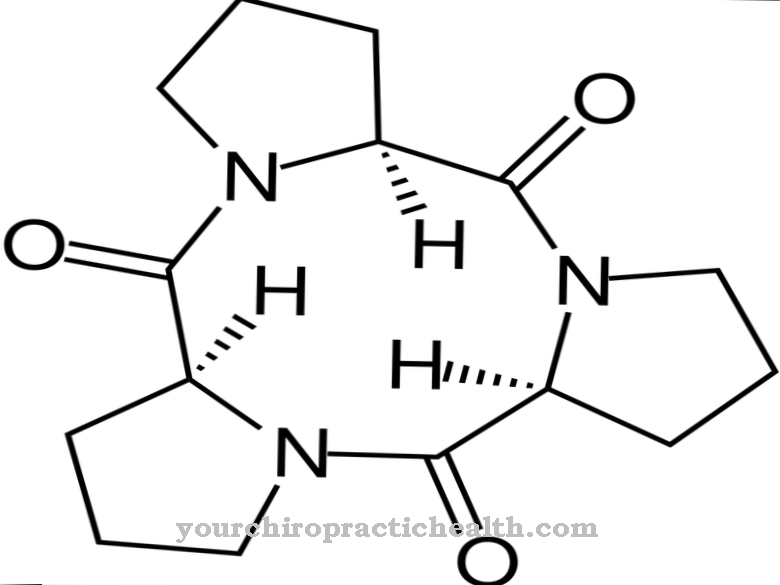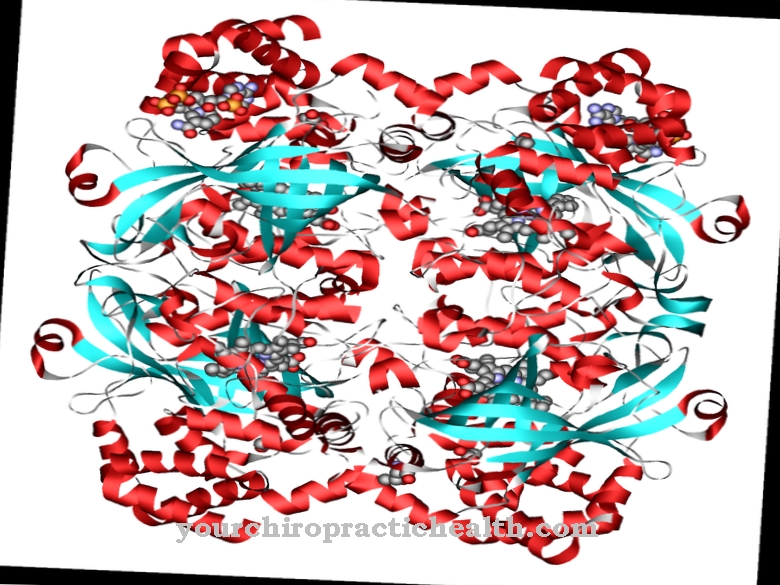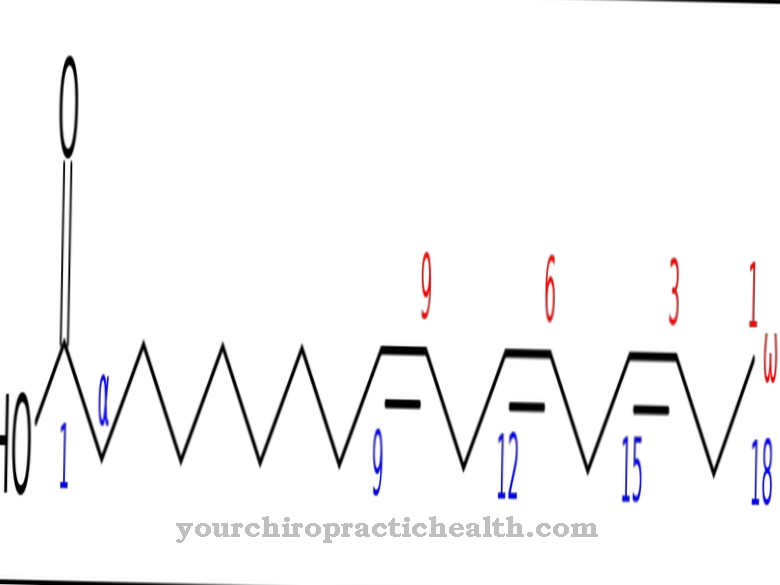Estriol, also Estriol called, is a female sex hormone that belongs to the group of estrogens.
What is estriol?
Estriol is a hormone. It is one of the natural estrogens. Compared to the other estrogens (estradiol and estrone), however, estriol shows only a relatively weak estrogenic effectiveness. The estrogenic effect is only about 1/10 as great as the effectiveness of estradiol. Estrogens like estriol are the most important female sex hormones.
They belong to the class of steroid hormones and are mainly produced in the ovaries, the corpus luteum and, to a certain extent, also in the adrenal cortex. During pregnancy, production also takes place in the placenta. Men also have estriol. With them it is produced in smaller amounts in the testicle. All estrogens have the so-called estran (13β-methylgonane) as their basic structure. The German chemist Adolf Butenandt was the first to isolate and determine the structure of the estrogens in 1929.
Function, effect & tasks
Estriol binds to receptors in the cell nucleus and stimulates the cells to produce various proteins. This sets in motion and regulates numerous physical processes. Estrogens are involved in controlling the female cycle. They ensure that the egg follicle in the ovaries matures.
Estrogens also affect the condition of the uterine lining. The uterine lining builds up through estrogens so that the egg can implant there after fertilization. The growth of breast tissue is also influenced by estriol. Estriol inhibits bone loss by deactivating the osteoclasts and at the same time increases the concentration of HDL cholesterol. HDL cholesterol has a positive effect on the health of the cardiovascular system. Estriol is known for its beneficial effects on the mucous membranes.
Estriol makes the mucous membranes in the urogenital tract, intestines and joints more resistant to bacteria, viruses and other microorganisms. Wound healing after injuries or operations can also be accelerated by estriol. Menopausal women are often given estriol by their doctor. Indications for the use of estriol are bacterial vaginal infections, osteoporosis, skin atrophy in the genital area, frequent vaginal infections, urinary tract infections and urinary tract incontinence.
Estriol can also be helpful for dry vaginal mucosa, itching and burning in the genital area, and abnormal vaginal discharge.
Education, occurrence, properties & optimal values
The majority of the estrogens and thus also the majority of the estriol is secreted in the so-called ovulation phase. The ovulation phase is the ovulation phase. In general, estrogens are the dominant hormones in the first half of the cycle. The production of the hormones takes place in the theca cells and in the granulosa cells.
During pregnancy, estrogens are also produced in the placenta. The synthetic route of estriol starts with cholesterol. A further conversion into 17-OH-pregnenolone or progesterone takes place via the pregnenolone. This is where the synthesis path divides. From 17-OH-pregnenolone, DHEA-S is formed, then DHEA and subsequently androstenedione or androstenediol. Androstenedione can be converted into estrone with the help of the enzyme aromatase. The estriol is only produced in the following synthesis step.
Estradiol is initially produced from testosterone with the help of aromatase. Estriol can be formed from estradiol. The synthesis route via progesterone is somewhat faster. Here, androstenedione or testosterone is formed from the progesterone via an intermediate stage. From this step on, the synthesis route is the same as the route via DHEA. The conversion of androstenedione and testosterone into estrogens takes place to a large extent in adipose tissue. The normal values in the serum are between 20-40 pg / ml.
Diseases & Disorders
While estriol levels rise rapidly during pregnancy, an estriol deficiency is particularly evident during menopause. The hormone synthesis pathway of estriol shows why an estriol deficiency in the endocrine system is particularly common. Estriol comes last in the synthetic route.
If cofactors that are necessary for the conversion of the previous hormones are missing or if there is a general hormone deficiency, the estriol is always affected, since it is the last and thus the weakest link in the chain. Other causes of a lack of estriol are weaknesses of the ovaries or weak adrenal glands. Burnout syndrome can also be associated with low hormone levels.
A lack of estriol can cause various symptoms. An estriol deficiency often shows up with increased susceptibility to infection, recurrent bladder infections, joint problems, dizziness, tinnitus and digestive problems. Other chronic mucous membrane problems such as dry eyes, unclear digestive problems or dry vaginal mucous membranes can also indicate an estriol deficiency.
An excessively high estriol level only plays a role in the context of estrogen dominance. Estrogen dominance is an impaired relationship between the sex hormones estrogen and progesterone. In the case of estrogen dominance, the estrogen level does not necessarily have to be increased. Low estriol and estradiol levels can also lead to estrogen dominance when progesterone is very low. The effects of estrogen dominance are very diverse.Premenstrual syndrome (PMS) is a well-known complex of symptoms that arise when people are dominated by estrogen. A few days before menstruation, various physical and psychological complaints occur.
Typical are water retention, hypersensitivity to depression, pain and cravings. Menopausal symptoms can also be caused by a dominance of estrogen. In addition, estriol dominance can result in symptoms such as headaches, insomnia, dizziness, concentration disorders, endometriosis, infertility and myomas.
Other parts of the endocrine system are also affected. In the context of estrogen dominance, thyroid dysfunction, blood sugar regulation and adrenal disorders can occur. Typical symptoms are also cravings for sweets, increased belly fat and joint problems.


